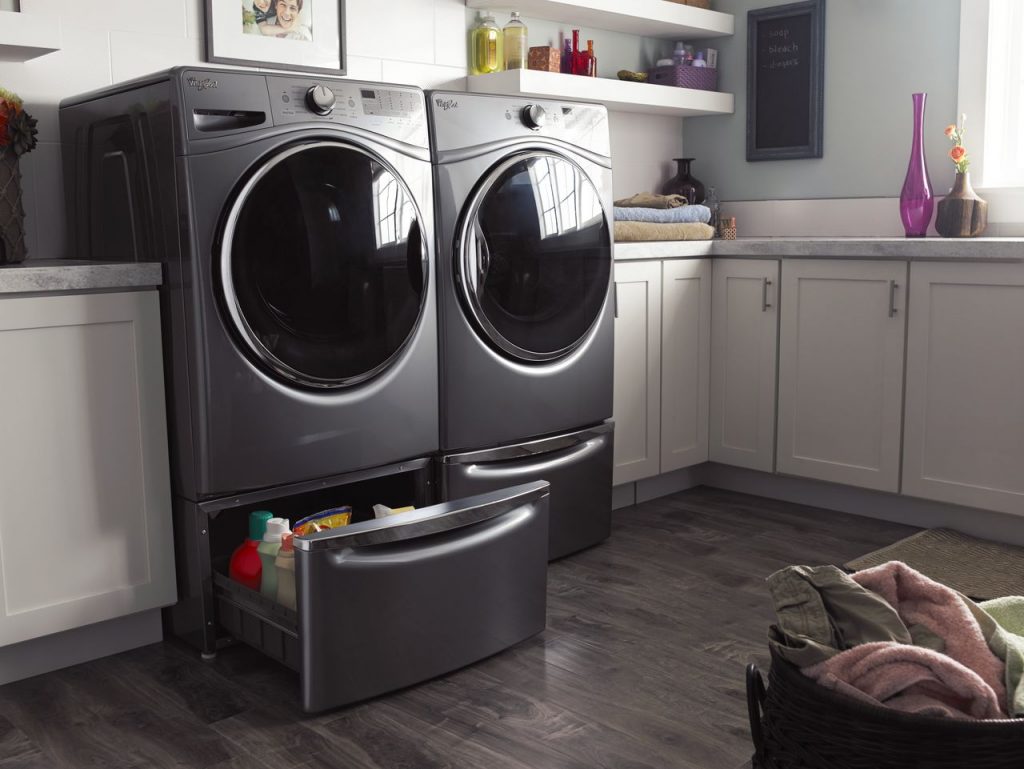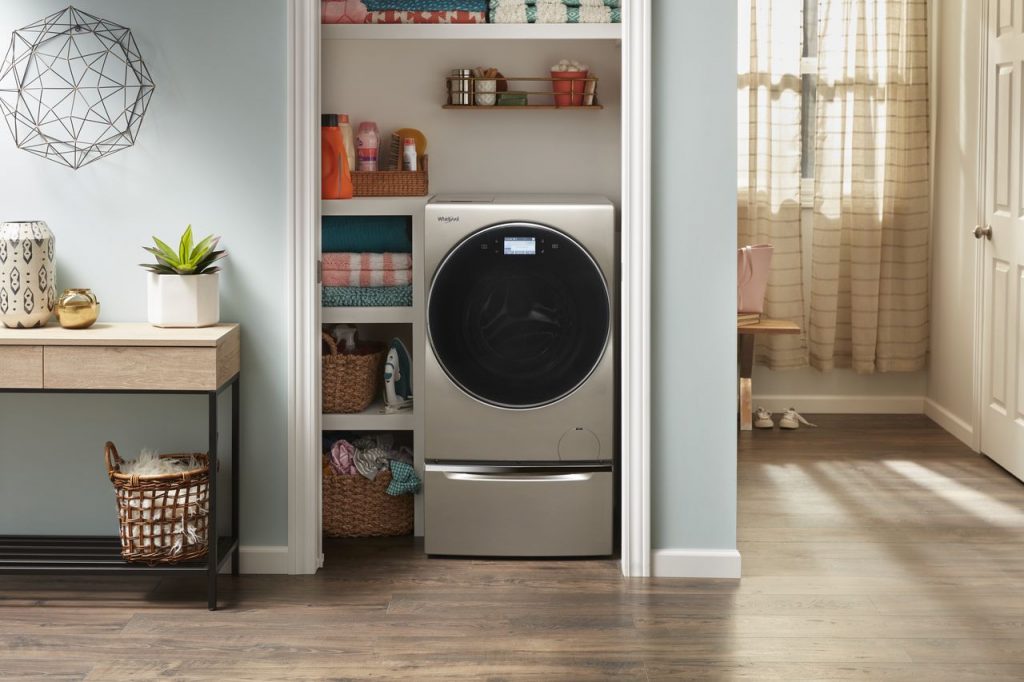The laundry room has seen significant changes over the years. What used to be a spot that was shut away and ignored until it was time for chores is now a multifunctional space designed to be both beautiful and efficient.
According to the National Association of Home Builder’s 2019 edition of the What Home Buyers Really Want report, an overwhelming 91 percent of all buyers want a laundry room included in their home – more than any other home or community feature. Of those, 54 percent consider it to be essential. It is the highest-ranking feature in the category, and 37 percent rank them desirable.
With statistics like that, it’s safe to say the laundry room should no longer be an afterthought in the home. Let’s look at how laundry rooms have evolved, some of the key features of a functional laundry room, how to make the most of a small laundry space and where laundry room design is heading.
Functionality: The Key Aspect of Laundry Room Design

While the laundry room has become a fun room to experiment with bold colors and interesting geometric tiles, you must first make the space functional, and to do so, think about the tasks that you need to complete in this space.
- Sorting:
Laundry begins with sorting clothes, and one solution can be as simple as a
shelf or cubbies to store laundry baskets. You can also install cabinetry with
built-in hampers. - Storage:
When you think about the design of this room, think vertically. In addition to
storing laundry items, this space can be a great area to store less-used items,
such as seasonal décor, canning supplies or crafts. - Drying:
Do you need to dry delicate and hand-washed items? If so, you’ll want space to
line dry. The market offers nice options such as rods placed between two
cabinets; retractable, wall-mounted clotheslines; and slide-out or tip-down
clothes drying racks. - Folding
& Ironing: Install counter space at a comfortable height (typically
36”) to minimize back strain when folding clothes. Another option is if the
washer and dryer are front load, a solid surface can be added overtop to serve
as a countertop. If space allows, you may consider installing a pull-out
ironing board drawer. - Lighting:
Never underestimate the amount of lighting you’ll need to complete tasks in
this space.
Other design elements you may consider to maximize functionality include a floor drain (just in case the washing machine hose breaks or leaks) or a utility sink.
Making the Most of a Small Laundry Room Space

In smaller homes, there may not be enough space for a separate laundry room. However, you can still design a functional laundry area in a smaller space.
- Go vertical with stackable washer and dryer
units. For even smaller spaces, consider an All-In-One Washer/Dryer combo. - Laundry pedestals can add more storage space.
They lift the machines up, making it easier to load, transfer and unload
clothes. - Install a pocket door that slides across to
conceal the area and dampen the noise.
Where Laundry Room Design is Heading? Only time will tell, but here are a few predictions.
- Laundry appliances will be smarter and
quieter. Smart home technology has already made a splash in the laundry
room, and we expect that it will be even more so in the coming year as
appliance manufacturers continue to find innovative ways to integrate
purposeful technology to make our lives easier. - Another prediction is that laundry space is
going to merge with other areas of the home. This stems from more families
craving simplicity, where they don’t necessarily want more space; they
just want the most functionality from the space they have. In fact, we are
already seeing this in-home design with the laundry room/mudroom combo or
laundry rooms with pet washing areas.
It is safe to say that the laundry room is no longer an afterthought within the home. If you have a laundry room renovation in mind — perhaps as part of a larger project — contact us. We’d be happy to talk with you further.
Images courtesy of Whirlpool®

